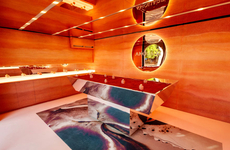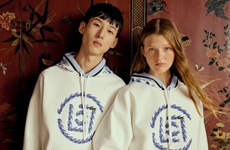
Rik van Veen Designs the Leopard Bench with a Bright Look
Amy Duong — September 6, 2024 — Art & Design
References: dezeen
Dutch designer Rik van Veen has created the Leopard Bench which is crafted from discarded plastic pipes that are fused together and carved in a pattern that looks like a leopard's fur. It is mostly crafted from leftover materials of gas and water pipes that are collected from the local building sites by the studio. The inspiration stems from the work of heat-fusing tubular plastic beads at the scale of benches.
Van Veen shares, "What I love about working with this material is that it's actually not waste at all. Plastic can be processed and reshaped into new forms over and over again. I love the idea of furniture being just one big piece of material. Heat fusion allows me to connect plastic pieces together without the need for additional materials or fasteners."
Image Credit: Rik van Veen
Van Veen shares, "What I love about working with this material is that it's actually not waste at all. Plastic can be processed and reshaped into new forms over and over again. I love the idea of furniture being just one big piece of material. Heat fusion allows me to connect plastic pieces together without the need for additional materials or fasteners."
Image Credit: Rik van Veen
Trend Themes
1. Sustainable Furniture Design - Designers are increasingly turning to recycled materials, like discarded plastic pipes, to create furniture that merges sustainability with innovation.
2. Heat-fusion Crafting - The process of heat-fusing materials is gaining traction as a method to create durable and seamless designs without the need for adhesives or fasteners.
3. Patterned Plastic Aesthetics - The aesthetic evolution of plastic furniture now includes intricate patterns, as seen with the leopard pattern bench, redefining the visual potential of recycled materials.
Industry Implications
1. Furniture Manufacturing - The industry is witnessing a shift towards using recycled materials and innovative design processes like heat-fusion to create sustainable and unique furniture pieces.
2. Waste Management - By integrating waste materials into high-value products like designer furniture, the waste management sector is exploring new revenue streams and reducing landfill dependency.
3. Interior Design - Interior designers are embracing eco-conscious furniture options that combine aesthetics and sustainability, appealing to environmentally aware consumers.
3.4
Score
Popularity
Activity
Freshness























